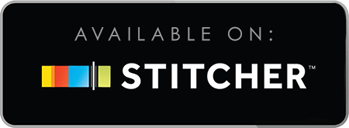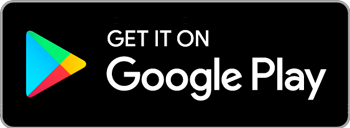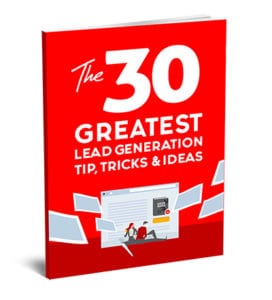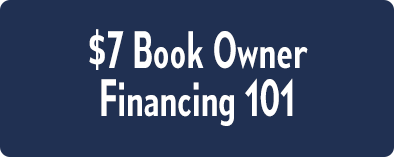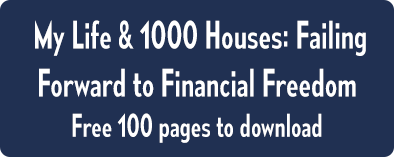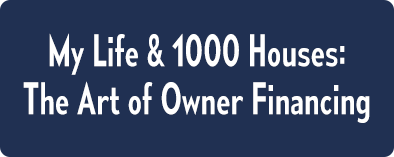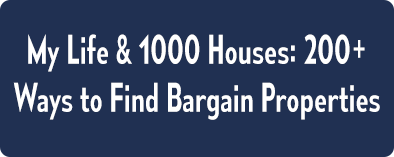PODCAST
Lead Generation: Tips And Tricks For Content And Inbound Marketing with Jimmy Newson
Episode 326: Lead Generation: Tips And Tricks For Content And Inbound Marketing with Jimmy Newson
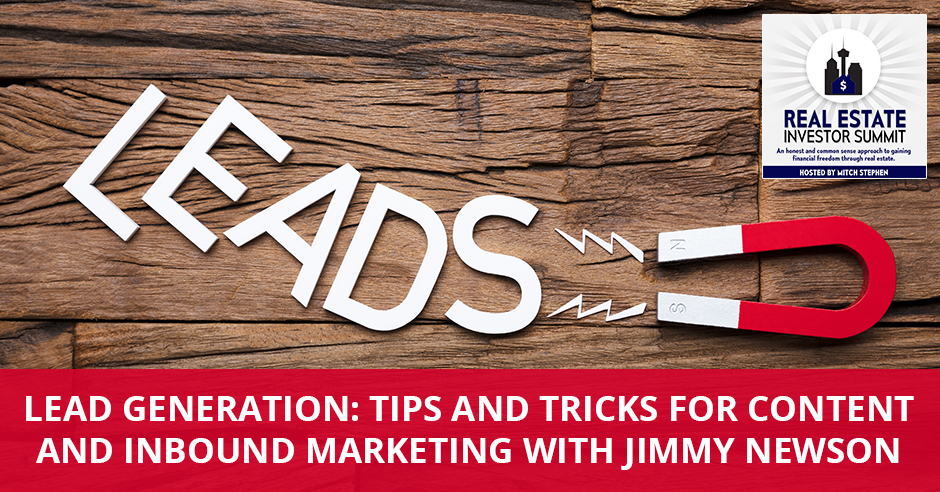
There is no better way of getting your products or services to other people than great marketing. In this episode, inbound sales and marketing consultant, Jimmy Newson, shares some of his lead generation tips off of his book, The 30 Greatest Lead Generation Tips, Tricks & Ideas, that will pique your consumer’s interest towards your business. He breaks it down into content and inbound marketing and leads us to be clear on your buyer personas and alignment. Jimmy also talks about the work he has been doing while sharing the beauty of digital marketing versus traditional marketing.
—
I’ve got Jimmy Newson and we’re going to be talking about content marketing. He’s up in New York and he’s got this big personality. He tells me he’s an ambivert. I said, “What is an ambivert?” He says, “I’m shy most of the time, but when I start talking about this subject that I love, I open up.” I said, “That’s cool because you don’t burn out. You only turn on the high when it’s time. When the time is over, you retreat back into peace, calm and quiet.” Unlike people like me who are burning the candle at both ends all the time, running their mouth and everything. About 5:30 in the evening, I pass out and fall over. I don’t know what you think your business is, but if you’re in business, you better be a marketer. You’re not going to be in business very long. Am I right, Jimmy?
You’re absolutely positively correct.
I would like for you to go over and visit TaxFreeFuture.com if you do not have a self-directed retirement plan that is tax-deferred or tax-free. There’s this huge tool that’s missing out of your tool belt. It’s crazy that you don’t have this at your disposal. There are 37 little video vignettes that tell you all about why and how. It will change your life. It changed mine. You will not believe what your financial advisors are not telling you. We’re going to tell you what they’re not telling you. We’re going to tell you why they’re not telling it to you. Jimmy, tell us a little bit about you. Where did you come from? What molded you?
I have a mutt. I’ve been all over the place. I ended up in New York by way of Massachusetts, Indiana and Florida. I went to school for music and video business. I’ve been in the music industry before I went 100% marketing. I left the music industry about 2005. I had to look out what exactly was something I could control that didn’t involve a lot of people. What ended up happening as I looked at it, I go content. When you control the content, you can control the story, you can control the narrative and you can control a lot of aspects within that. The video was pretty much my introduction into leveraging content, which gave me or whoever I was dealing with a voice to bypass a lot of people and get to the end-user.
As I was producing video content back then, it was a lot more expensive. I would produce content for a business or high-level individual. I come back six months later trying to sell another video and they’re like, “We don’t want to do any video because it didn’t work.” I go, “What do you mean it didn’t work?” They go, “We throw it on YouTube, it got eight views and two thumbs up.” I’m going, “What did you do with the video?” They go, “We put it on YouTube.” I go, “Let me ask you a question. If I will give you 100 very pretty-looking business postcards and you put them at the edge of your desk.” They go, “That’s ridiculous. Why I will sit them on my desk, no one’s going to find it?” I go, “That’s exactly what you did to the video. You put it at the edge of the spot. The video as any other tool is a tool. You still have to do something with that tool.” That’s the purpose of it. It doesn’t matter if it’s video, blogs, social media posts, it has to have a purpose. When it has a purpose, you got to put that purpose into motion. You’ve got to add things around it to help support it and give it enough opportunities to live, grow and fly.
Jimmy said, “I made a great video, you’re just bad in marketing.”
In 2014, I started working on a project in your neck of the woods. It was a documentary project. We’re content creating. At this point, we started to engage in marketing companies. Every single marketing company failed in one way or another. They need to ask the right questions. One company started marketing our product without even talking to us. I’m going, “How do you do that?” They were making the most ridiculous mistakes. That’s what made me go, “I need to go more in marketing.” As I started to go more into marketing, I started understanding this thing called inbound marketing, which is what I am an inbound marketing consultant and an inbound sales consultant because they work hand in hand with each other.
Tell us about what inbound marketing is.
Figure out what’s the easiest thing you can sell with your eyes closed and start from there. Click To TweetInbound marketing is the technique of leveraging content for your products and services to draw people to you. Inbound versus outbound, where you’re cold calling people. You’re mailing out or emailing. It can be a bit difficult but at the end of the day, it’s actually a better system. It’s easier and is scalable. That’s the biggest thing because you’re basing it on the fact that you’re leveraging social media, search engine optimization. You’re leveraging content. When people are searching online, they’re searching for solutions. The key for you is to make sure that you have content in place. What we call content in the right place at the right time for the right person.
It’s a soft sell too. No one wants to listen to a sales pitch. It’s going to have some innate value, hence the word content. Everything has content. Is this is the content that’s desired or they’re going to throw away or turn off within the first ten or fifteen seconds?
At the end of the day, the content has to be helpful. It’s not about an advert. It’s not about putting out something and saying how great you are. The key is you have to position your products or services based on the problems or the goals of the end-user.
It’s a complicated science and it’s not all on the surface. Let’s don’t get political at all, but they were saying that Google has the ability to throw an election if it put everything behind it. It said like, even putting up the words on the homepage, “Go Vote” in the Google colors could sway an election. Why would go vote? It seems neutral. It’s not neutral because they know the numbers behind how many people hit that page. If X of them vote one way by three-quarters and only 25% of them vote another way, then that Go Vote can push. Content marketing and marketing in the digital age is way more complicated than you might know because it’s a lot to do with the numbers behind you and so much more than what you just see on the surface. Am I going off on a tangent out in left field?
No, there are lots of things that definitely play in that. The main thing when it comes to content marketing if you want to be specific about your business or company, the first thing is being very clear on who you’re trying to attract. We call them those buyer personas, avatar some people call it. The more you understand your avatar, your buyer persona, the better opportunities you have to make sure that you’re attracting the right type of people that end of the day we’ll bond with your message. It’s definitely a soft sell. This works great for those who don’t want to sell, which are the majority of the people.
What’s the second thing?
There has to be alignment. It’s one thing to understand that, “I’m going after this type of person.” When it comes to personas, the two most important things I look for are what are the goals and what are their challenges or their problems? Regardless of their psychographics and demographics, I know what age groups I’m going after. I know if this female, a male or both. I understand that they have kids. At the end of the day, what are they’re struggling with? When you’re able to talk about that, you’re talking about an emotional connection. People make decisions on emotional triggers. When you’re able to do that, you’re able to capture their attention quicker and then start to lead with the project. Never ever talk about yourself, but either addressing the problem or the solution to the problem. Let them now come to the conclusion that because you provided this information to them, you are an authority. You’re building your trust with them, your authority and your relationship with them where they’re starting to see you as someone that’s not necessarily selling them, but somebody that’s there to help them.
The first step in your content is define you decide who you are and what’s your avatar, and two is alignment. I’m still a little shaky on alignment. Does alignment means define the people that have the problem that you can solve?

Lead Generation Tips: People make decisions on emotional triggers. When you’re able to do that, you’re able to capture their attention quicker and then start to lead with the project.
At the top of it is the person that you’re trying to help. In the middle is the problem that they’re having. At the bottom is your product or service that totally aligns with that. If they follow that path, the obvious answer is your product or service. A prime example, I’m talking about different types of cool t-shirts and then I drive you to my website and I sell mostly shoes. I’m still selling apparel, but the alignment’s off. People do that. That’s a very drastic change but it brings on my point that goes if I’m talking about t-shirts and I give you some example t-shirts, I send you to my site and I got shoes, hats and long shirts.
They’re going, “I just want a t-shirt.” Sell them the t-shirt then after they’ve made the commitment, you can start talking about all these other things. At the end of the day, people will meet you. They go, “How are you doing?” They go, “What do you do?” They go, “I do this.” They go, “This is the problem I’m having.” You talk to them, “What’s your problem?” They go, “I have this?” Talked about that problem. Get in detail, get deep on that problem and offer solutions on that problem. At the end of the day, they walk with that conversation going, “That helped. I understand. I think I want to engage with that more.” Are you engaged? We start the relationship. The alignment is stay on focus on the conversation that you’re having at that particular moment with that person.
Define who you are and define who your audience is. Define the problem that you can help with and show them how you have a solution for the problem.
If you do that, you’re going to win. This can be done at scale once you’re able to automate these leveraging tools. The key is you should never have to communicate with someone physically until they get close to what we call the bottom of the funnel. Where human intervention probably has to be a part of the process. If you’re selling a low-ticket item, like a tennis shoe or a shirt or a hat that’s little. I have a company that I’ve probably spoken to one client out of the two years the company has been running, but then I have high-end services that no one’s going to spend $1,000 without some type of communication process. You have to know your product and determine when do I need to get involved physically versus letting the tools do all the heavy lifting for me.
When it comes to the one-on-one contact, then have them gone through or prove themselves as a serious contender who deserves some real-time. This digital book that you want to give away is pretty intriguing,
- 30 Greatest Lead Generation Tips, Tricks & Ideas
That’s got to be valuable. If you gave away ten, you’re giving away 30, you have some great stuff there. Give us an idea of one or two of these tricks, tips or hints.
There are lots of things. It’s not necessarily about trying to be original, it’s about trying to find things that work. I always say when you’re trying to generate leads online you got two things you have to solve. You either solving a traffic problem or a conversion problem. If you’re getting traffic and they’re hitting the brick wall and no one’s converting, you’ve got a conversion problem. If you don’t even have traffic, then you don’t have either. One is about creating the right type of language to get people to the page. There are definitely ways that you look at framing, an offer, whether it’s a lead magnet or a free consultation. I hate things like, “Sign up for my newsletter and we’re going to email you all the time.” It’s not valuable enough for someone to want to give the email. You got to give them something that they want, but you can’t give them what they want if you still have not defined who it is you’re trying to attract. These tools teach you how to dial in on certain offers. The offers are useless if you don’t have certain foundations in place.
Worry about traffic first and then immediately when you start getting traffic switch your focus to conversion. That’s the order of things. If you have 100% conversion but you only got one person get through the funnel.
It’s not so good.
When you control the content, you can control the story, you can control the narrative and you can control a lot of aspects within that. Click To TweetHow do you even say you have 100% conversion but you’re going to get broke?
The key thing here is a lot of people look at this as a set it and forget it. That’s the worst thing you could possibly do. You have to constantly monitor the system until you optimize it to the point where you go, “I can’t optimize this anymore.” If you want to talk about a starting point, you may have a product. I have a slide when I do live talks and I’m selling fire. This is how you look at when you’re creating content, one problem, one solution, one call to action. If I tried to sell you fire, I’ve got to determine how many different problems that fire has solved?
The fire actually for me, solves four problems. Problem number one solves the ability for you to heat a house. Problem number two solves the ability for you to heat food. Problem number three solves the ability for you to walk in the dark. Problem four, if you’re an entrepreneur like us solves the ability to light a fire under your butt and get you moving. You’ve got four different problems. You got four different types of people that you can talk to. If you can develop a system for each one of those independently, you now have four different doorways into your business.
When you have four different doorways into your business, you’ve got four times the opportunity to drive more traffic because now you can talk to people who just want to eat food with fire. At the same fire, you can talk to someone that wants to talk about heating their home and keeping the family warm at night. The third one is, how do you not get salmonella? You need to cook the food. The point is, even with one product, you’ve got so many different opportunities. Don’t try to talk about all of them. Talk about one of them specifically and targeted towards someone that fits that particular demographic persona.
That’s power for what you’re saying. I even had a revelation when you’re saying that. Don’t keep a bunch of information on everybody. Place the right information in front of the right people in a bite-size bit what they’re looking for. I suppose you could take the four or five individual ways you’re going to sell this product and figure out which one converts the best and then dropped the rest, magnify and put all the money into the one that’s doing it.
Now, your 80 and 20 in it.
Until it gets saturated and then move down to the second-best one.
When I hit people with this, they get a little overwhelmed. I usually go, “It’s not about overwhelm. Figure out what’s the easiest thing you can sell with your eyes closed and your asleep and start there.” Don’t look at all your parts and go, “Will I sell eighteen things?” Don’t worry about that. Pick one and start building a funnel or a system or whatever you need to build around that one thing and get good at it. The cool thing about it is it’s a repeatable process. Once you get good at it, all you got to do is take that entire funnel, lift it up and put it into another open space, and then plug and play with either the same product from a different viewpoint with a different persona and repeat it. You have a blueprint to follow and you can do that. Even if it takes you two months to do one funnel, the next one, it will take you half the time. You’ve done all the initial work, all you got to do is now monitor it and see how well it’s doing and make slight tweaks to it occasionally through AB testing.
It doesn’t matter what you’re selling. Tell me how long have you been in this business?
I’ve always considered myself a marketer. I’ve been in business for over 27 years. I look very young.
How are you doing that? Maybe I need to be selling some of whatever that in me.
If I could figure out how to get it out of me, then yes. I’ve been deep in the marketing world since 2010, where I took it seriously. I’m an avid learner. I think whatever you do, there’s always so much more you can learn. Conferences and events where I probably grow more than I had before because I’m very clear on what I do, who I help and how I help them.
Who have you been helping lately? What kind of companies?
I’ve worked with all types of companies from Fortune 500 companies to mom and pop shops. I brought on the National Speakers Association to work with them on a project at the same time, I brought on a small dance studio in Manhattan that wants to get their classes out there and promote it. The reason why I love inbound marketing so much is because it encompasses every possible thing you could possibly do with your business online, from SEO, paid advertisement, landing pages, CRMs to email marketing campaigns. Everything fits somewhere. When you look at it from an inbound marketing standpoint, you’re able to diagnose any type of business and figure out not only what’s there, but more importantly, what’s missing and how do we seal up this funnel and make it work better? I’ve done work with the Grammys.
I’ve done work with People Magazine. I’ve done work with plumbers and chiropractors. It doesn’t matter. What changes is always what their business is, but what doesn’t change is who are their customers. I was at a conference and somebody asked the gentleman on stage, he goes, “How did you change when you were dealing with different clients?” He goes, “I didn’t change at all because at the end of the day I want to know who their people are and how do I help them get to the people.” It doesn’t matter if they make $100 million a year as a company or if they’re starting out. You need to know what you’re selling and who does it helps. Once you know those two things, everything else is just a matter of what tools do you have and how can we get there as fast as possible by still leveraging the best practices.
They have huge databases. It’s easier to put people in categories than it’s ever been. I can’t think of a situation where you couldn’t find the category that you need, although sometimes there are public lists and sometimes there are lists that you got to go out and figure out some other way. A little bit easier or someplace where there’s data. This show is an outbound marketing for me and the things that I do and for the people. We go out into the world, it’s one little tiny piece that we get content for and from. You can get a lot of content from something like this. Those funnels, you can tell where people drop off. They’re going through a process on the way to the order page. You can see how long they hung, how far they scroll down. You can pick up a lot of data about the people that are coming in and figure out where your message is broken.
That’s the beauty of digital marketing because unlike traditional marketing, you can’t do that. That’s why I only focus on digital because of the fact that I can pretty much show you ROI and show you where things are happening. When you have that blueprint and that data, it’s so much easier to quantify something or prove a point or make changes that actually do help improve the results that you’re looking for.
When you're trying to generate leads online you got two things you have to solve: traffic problem or conversion problem. Click To TweetI know it’s probably different for the New York Times and mom and pop. Is there a way to talk about budget? If I wanted to start a campaign to help find more houses that I could buy, what kind of budget would I have to consider? If I’m trying to buy in one town, I don’t want to be nationwide. I don’t want to be homevestors. I don’t want to be across the continent. I need the people in my hometown to know that if they got a situational property or they’re in a situation and a sale of piece of real estate can solve that situation, would you consider me as a phone call?
Yes, I have clients that spend $200 a month with the ad spend only. There are two sides as far as hiring a consultant or an agency or a freelancer is their fee whatever that might be. There’s the budget that you need to determine. The budget is set by how many leads would you like to get on a monthly or weekly basis. Let’s take two sides of it. We have social media and we have paid ads like Google ads. Google ads is search and the social media is passive. Search means they’re looking for a solution. The passive means they’re scrolling and they happen to see your ad and does it click with them at the moment they see it. First of all, we look at the product. If you’re a plumber, say you’re in a house and your pipes burst, you’re not going to go to the social media and scroll and help them find that. You’re going to go to Google. That’s immediate. If you’re looking at doing a renovation of one of your rooms, you might see a social media ad that says, “Considering renovating for the spring?” We have to determine first of all, which platform is better based on your offer and the product.
Once we do that, then we can look at data that says typically for this industry, because you can even do a search that goes, “What is the average cost to advertise on Google for this industry?” You can get the average cost per click for doing a specific type of home improvement. It will cost you $3 per click. If you go, “I want at least 50 ads a month.” You got to go 50 times three, your budget is now $150 a month. You may get 2,000 impressions. You don’t pay for the impressions, you pay for that click. The key thing here is Google considers a good click-through rate at 2% out of 102% and people go, “That’s relatively low.” I go, “How many times have you clicked on an ad just to click on it?” Most people don’t click on the ad, they go straight down to the organic search. The people who actually click on the actual ad are usually people that are in pain and need to try to figure out the fastest way to get out of it. That’s why it’s such a valuable 2%. If I can say, you’re going to get at least 50 leads a month at $3 and your budget has to be a minimum of $150. I should get at least that many.
The question is, how many can you close if they actually connect with you? You get 50 clicks and out of the 50, ten people call you. Out of that ten people that call you, maybe two people close. If a client’s lifetime value or even that initial sale is $500 or $1,000 you just made back your budget off of one click out of the 50 that click through. These are our initial budgets. There’s definitely a little bit of front-end math that has to happen to figure out what should be a good budget based on your industry. Once you know that then now you can move forward and feel confident that, “Even if I haven’t done this before, this is the blueprint I’m going to initially follow until I actually get the real data.”
I see two different things there. The pay per click, you could probably size up a lot faster than the advertisements that are popping up on the sidebar because those got to be in front of people for a long time. It’s like a radio. If you’re going to get into radio advertising for two weeks, don’t even do it. You have to do advertising for six to eight months minimum and be consistent on a daily basis working days. I see some of these ads are like that. You have to go in for the long haul. Other ads, you can size up, “I got a thousand exposures. It only got me three clicks. I need to change my message.” I can happen in one day. Do you prefer to spread it out at least over five days? Mondays are different advertising days than Wednesdays and Fridays.
What I typically do is we do it on a monthly. We’ll go, “I want to spend $200 a month on ad spend on Google ads.” Certain keywords have different values price-wise. Sometimes we’ll try to find keywords that are cheaper. You can say a keyword phrase, New York plumber, plumber in New York. Those are two different keywords. They have two different values. If I know how I position it, I can probably get you a better bang for your buck. For a plumber in New York versus New York plumber. I’m going, “This is the keyword I’m going to try to mass target because I can get this at a better price.” I still will add other keywords until I start to see the data, there’s a lot of structure going on in the back end.
This New York plumber, it hits so often. It has a very high price and there are tens of thousands of people hitting this a week. I need an extra twenty customers a month to make my whole life better. I don’t need to pay the top dollar for the top one because plumber in New York is getting half as many hits, but they’re still valuable hits. I don’t have to pay as much for it. I’m just trying to pick up an extra ten or twenty people. I don’t need to pay and compete with the very expensive AdWords if there’s enough potential in some lesser AdWords. Did I say it right?
Yes, the good thing about this is there are so many different ways that you can go about doing this. I have a client that we run both Google Ads and Facebook Ads. It’s for what we call the middle of the funnel. It’s an eBook about engaging in their industry. It’s doing well on both platforms. Not that it’s unique but sometimes you do better on one versus the other. We run it on both because the ROI on both is paying for the campaigns. If it’s on social media, it has to be some level of visual content for it. Social media may be where the majority of your customers live, especially if you’re dealing with a younger demographic. You might have more success there because you want to try to figure out what’s the frequency. The frequency for an ad to show up in someone’s feed, maybe three, maybe four, maybe five. You can figure out where people start to recognize it and then your top of mind when that moment comes. It’s all about positioning the offer. If you can try to integrate some level of scarcity, that’s always good because it gets them to take action versus waiting when they need it and they can’t remember where they saw the ad.
Scarcity, taking action for something, always have some special that’s running out sometime soon. It’s pretty easy to that make happen. I want to thank you for taking the time. Tell us what else you’re into or what do you got going on?
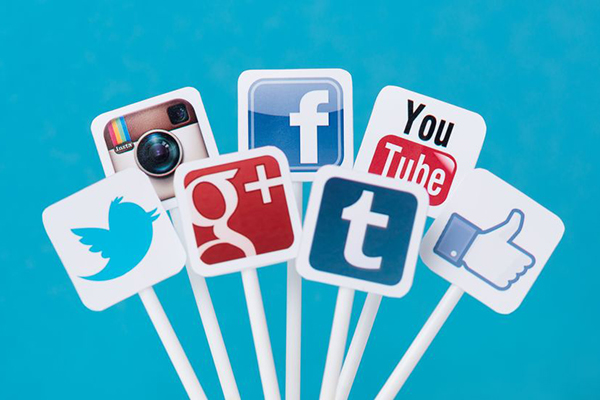
Lead Generation Tips: Social media may be where the majority of your customers live, especially if you’re dealing with a younger demographic.
I took the position of the New York Marketing Association. I’m the Marketing Director. I took that because it gives me a better opportunity to create better educational opportunities for small businesses. We’re in the process of creating a series of virtual summits which help people in the marketing realm. Different things that you can look at. We want to help address that and bring on some high-level guys that specialized in a very specific part of these digital marketing strategies. The virtual summit is where I’m focusing my time. You can engage me as a consultant between that and going to the page that you mentioned as well.
You help people set up their campaigns, run campaigns, monitor their campaigns and judge their campaigns. I want to thank everybody for taking the time to stop by and get you some Jimmy Newson. Do you have any little encapsulate encouragement for people who are about to jump into this digital marketing realm and are afraid to?
The key is the future. If you’re not here already, you need to definitely be here. It can be a bit scary when you’re first starting out. Take it slow. Pick one thing to do, whether it’s even to jump on a social media channel and get familiar with it. I do run across a lot of people that go, “I don’t have a Facebook.” I’m like, “Figure out where your best customer is and get on the platform so you can understand it.” You can’t do anything on it if you don’t understand it first.
None of this stuff is going to happen overnight. You don’t get a college degree overnight. Why do you expect to be an expert in this thing overnight?
Check out Jimmy’s upcoming Lead Magnet Virtual Summit
Get the free copy of his book
30 Greatest Lead Generations Tips, Tricks & Ideas.
Thank you.
I appreciate you, Jimmy. Thanks for taking the time to come on.
It’s my absolute pleasure.
Important Links
- REInvestorSummit.com/Content
- REInvestorSummit.com/Moat
- REInvestorSummit.com/Grow
- REInvestorSummit.com/101
- REInvestorSummit.com/Coaching
About Jimmy Newson
 Jimmy Newson’s purpose is the help entrepreneurs and SMB’s attract and convert high-quality leads into happy customers. His mission is to help them leverage technology to save time and money while increasing productivity and their bottom line.
Jimmy Newson’s purpose is the help entrepreneurs and SMB’s attract and convert high-quality leads into happy customers. His mission is to help them leverage technology to save time and money while increasing productivity and their bottom line.
As the marketing director of the New York Marketing Association, Jimmy Newson is a multi-certified inbound marketing and sales consultant, as well as an author of several popular sales and marketing ebooks. He has worked with local and national brands including NARAS, (Grammys), People Magazine, AT&T, Microsoft, AOL, New York-Presbyterian Hospital, St. Mary’s Healthcare System for Children, Smart Hustle Magazine and the list goes on. Jimmy Newson is responsible for helping his customers generate high-quality leads and increase their bottom line. Through his coaching, consulting, and public speaking, he effectively teaches businesses how to initiate effective online marketing strategies. Jimmy is also an NYC Career and Technical Education (CTE) Business & Finance Commission Member. You can connect with him on Twitter at @jimmynewson1 or on LinkedIn @ linkedin.com/in/jimmynewson.
Love the show? Subscribe, rate, review, and share!


